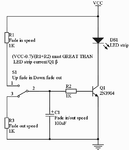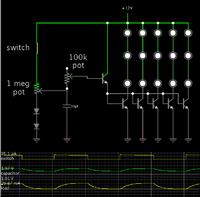May Day
Newbie level 4

- Joined
- Aug 23, 2013
- Messages
- 5
- Helped
- 0
- Reputation
- 0
- Reaction score
- 0
- Trophy points
- 1
- Activity points
- 41
How to: LED strip 12V - ON = fade in, OFF = fade out
Hi everybody,
I'd like to make my LED strips to turn on slowly and then turn off slowly.
Say I have a 5m 3528 LED strip and when I switch it on, the strip fades in and when I turn them off, the LED strip fades out.
I know there are plenty of ideas online, but they are not what I'm looking for.
This is a good example what I want when he turns his lights on, they fade in, but when he turns them off, they DON'T fade out, they turn off instantly. The link to that project is here: https://www.instructables.com/id/How-to-fit-LED-kitchen-lights-with-fade-effect/#intro Perhaps I can modify it a bit so the LEDs fade out.
I'd appreciate you advices!
Thanks.
Hi everybody,
I'd like to make my LED strips to turn on slowly and then turn off slowly.
Say I have a 5m 3528 LED strip and when I switch it on, the strip fades in and when I turn them off, the LED strip fades out.
I know there are plenty of ideas online, but they are not what I'm looking for.
This is a good example what I want when he turns his lights on, they fade in, but when he turns them off, they DON'T fade out, they turn off instantly. The link to that project is here: https://www.instructables.com/id/How-to-fit-LED-kitchen-lights-with-fade-effect/#intro Perhaps I can modify it a bit so the LEDs fade out.
I'd appreciate you advices!
Thanks.
Last edited:





